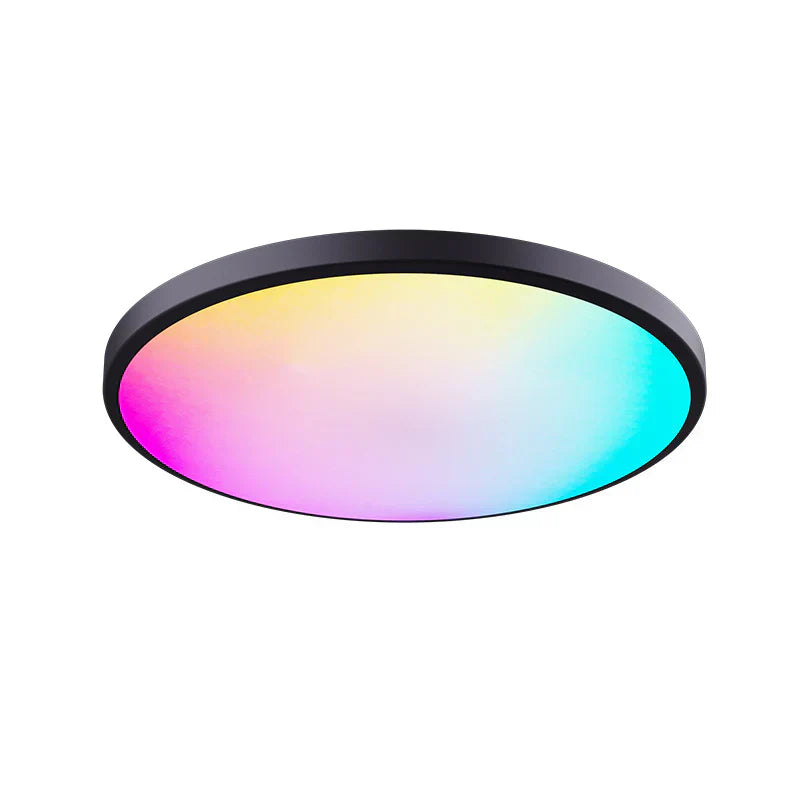With the rapid development of smart home technology, smart LED lighting has evolved from simple remote dimming and color temperature adjustment into a comprehensive solution that integrates color control, scene automation, voice control, and app management. Smart LED fixtures not only improve daily convenience but also create richer lighting experiences for homes, offices, commercial spaces, and entertainment areas.
When selecting smart LED lighting products, in addition to traditional metrics such as brightness, power consumption, and lifespan, three core performance factors become critical: response speed, color accuracy, and app integration stability. This article provides a detailed analysis of these key aspects to help users choose higher-quality smart LED lighting.
1. Response Speed
Response speed refers to the time a smart LED light takes to change brightness or color after receiving a control command. Faster response speed ensures more immediate feedback, offering a smoother user experience.
-
Importance of Response Speed:
-
Enhanced User Experience: In app control, voice commands, or automated scenes, low-latency lights respond instantly, avoiding delays that can feel frustrating.
-
Adaptability to Dynamic Scenes: Fast response is crucial for entertainment, gaming, video playback, or stage lighting to synchronize lights with the scene.
-
Multi-Light Synchronization: In smart home systems, multiple lights often change simultaneously. Faster response ensures consistent behavior.
-
Factors Affecting Response Speed:
-
Control Chip Performance: High-performance chips process commands quickly.
-
Wireless Communication Technology: Wi-Fi, Zigbee, Bluetooth, and other protocols influence transmission speed and signal stability.
-
App-to-Light Communication Optimization: Optimized data protocols and caching mechanisms reduce command delays.
2. Color Accuracy
Color accuracy refers to how closely a light matches the intended color, including color temperature accuracy, RGB color reproduction, and uniformity across the color range. High color accuracy ensures realistic, vibrant, and smooth color transitions.
-
Significance of Color Accuracy:
-
Improved Visual Experience: Accurate colors make homes, offices, and entertainment spaces more visually comfortable.
-
Scene Atmosphere Creation: High color accuracy allows precise control of mood lighting, from warm light for coziness to cool light for focus.
-
Creative and Entertainment Applications: In gaming, video, and digital art, accurate colors deliver more immersive visual effects.
-
Key Parameters:
-
Color Rendering Index (CRI): High CRI (>80) ensures true-to-life color reproduction.
-
Color Temperature Range and Accuracy: Adjustable from warm white (2700K) to cool white (6500K) with minimal color deviation.
-
RGB/RGBW Resolution: Supports millions of colors with smooth transitions.
3. App Integration Stability
App integration stability refers to the reliability and consistency of data communication and command execution between the smart light and its controlling application. Stable integration ensures that the light behaves as expected during remote control, scene setup, or voice commands.
-
Importance of Stability:
-
Reduced Errors and Malfunctions: Stable integration minimizes issues like disconnections, flickering, or lost commands.
-
Enhanced Smart Experience: Scene modes, scheduled operations, and automation execute as planned without manual intervention.
-
Compatibility and Scalability: Ensures smooth interaction with smart speakers, home gateways, and other IoT devices.
-
Ways to Improve Stability:
-
Use Mature Communication Protocols: Wi-Fi, Zigbee, and Bluetooth Mesh provide stable connectivity.
-
Optimize Firmware and App Software: Regular updates and optimizations enhance performance and user experience.
-
Quality Hardware Design: Reliable chips and power design ensure long-term operational stability.
4. Recommended Smart LED Lighting Products
To help users select smart LED lighting with excellent response speed, color accuracy, and app integration stability, the following products are highly recommended:
|
Product Name |
Link |
|
2-Pack 24W/12 Smart RGBCW Ceiling Light Fixtures |
|
|
Hexagon Lights Smart App Control RGB Hexagon LED Lights |
|
|
LightingWill CST1 TV Backlights, App-Controlled |
|
|
LED Matrix Screen WS2812B, Individually Addressable RGB |
|
|
6-Pack WiFi Intelligent LED Downlight RGBCW |
|
|
Smart RGBCW Outdoor LED Flood Light (30W–200W) |
These smart LED lights excel not only in response speed and color accuracy but also in stable app integration, remote control, and scene management, making them ideal for homes, entertainment spaces, and commercial applications.
Conclusion
Smart LED lighting is no longer just about brightness and energy savings—it has become a key component of modern smart home experiences. By focusing on response speed, color accuracy, and app integration stability, users can select reliable, flexible, and visually appealing smart LED lights, creating intelligent, comfortable, and dynamic lighting environments.

